It is generally agreed upon by doctors and surgeons that surgery will introduce more scar tissue into the shoulder joint capsule. This added scar tissue will be problematic, requiring intensive PT and conservative treatment options post-surgery. If not dealt with properly, your frozen shoulder injury could end up in worse condition than before the surgery! This is why surgery is only performed as a last resort.
Most doctors, physicians and orthopedic specialists will recommend conservative treatments for early cases of frozen shoulder injuries (in the freezing stage) before considering surgery. These conservative treatments are outlined near the top of the page here.
If you are unsure about whether you need shoulder surgery, you may want to read through our "Do I Need Shoulder Surgery" page, here.
If you are unsure about whether you need shoulder manipulation, you may want to read through our "Do I Need Shoulder Manipulation" page, here.
If you are not at the surgery stage and your physician has opted to treat your injury with conservative treatment options, then you will find that many of our frozen shoulder customers have had great success treating themselves with the powerful conservative treatment products we offer through AidMyFrozenShoulder - the TShellz Wraps. When used as directed, it is our opinion that adding the TShellz Wrap to your conservative treatments will give you the best chance of healing your frozen shoulder without the need for surgery.
The TShellz Wrap® will not only enhance blood flow in the treatment area, it will also help prevent soft tissue atrophy by increasing elasticity of the affected soft tissue. This increased elasticity will reduce your risk of re-injury or worsening the injury.

If surgical intervention is required, talk with your doctor about using these same products for post-surgery recovery as you will find them to be highly effective for reducing post-surgery inflammation, enhancing range of motion and minimizing scar tissue growth (which is a substantial problem in nearly any case of shoulder surgery).
If you've had surgery on your shoulder or other soft tissue in the area, then your doctor will quickly get you on the path to rehabilitation. The aggressiveness of your rehabilitation efforts and your injury's ability to heal will depend on a variety of factors including (but not limited to):
Know that no 2 rehabilitation plans are alike - The less invasive your surgery is, the quicker your road to recovery will be.
The goal of a rehabilitation plan is to manage pain and swelling while improving function, strength, and range of motion. Ultimately, you'll regain enough strength in your shoulder to be able to move it around and return to activity.
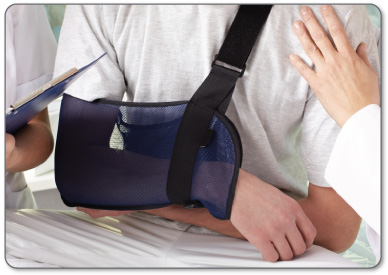
You'll most likely spend a lot of time with a physical therapist after your surgery, but as your healing progresses emphasis will be placed on your personal at-home treatment.
The success of your rehabilitation will depend on your dedication to working with your doctor and physical therapist while also managing your recovery on a daily basis at home.
No matter what type of surgery you've had (or even if you don't need surgery at all), your home treatment routine can be improved by controlling initial and on-going pain/swelling, increasing blood flow to heal your shoulder, and incorporating daily stretches to increase range of motion so that you can achieve long-term, positive results.
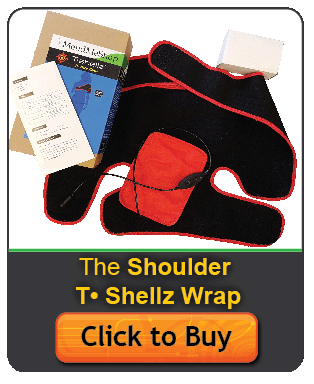
All of this can easily be done by incorporating the use of a Cold Compress or Ice Pack and a Shoulder TShellz Wrap® into your rehabilitation routine. Proper and regular usage of these tools will decrease your time spent in recovery and reduce the risk of re-injury.
During the first 24 to 72 hours after the surgery your shoulder will be tender, swollen and very painful. Your shoulder may be weak and unstable, and depending on your procedure, you may have to wear an arm sling for at least 1 week. The most important aspect of frozen shoulder surgery is the rehabilitation afterwards, because those who don't stretch and use conservative treatment methods usually have their frozen shoulder injury come back within a few weeks.
There is always a possibility of re-injuring your shoulder even after a surgical procedure has been done.
Ask any doctor and they'll tell you that the success of your surgery depends on your level of dedication to regular at home care of your shoulder. Most of our frozen shoulder post-op clients have treated themselves successfully through regular use of the Shoulder TShellz Wrap.
Using these treatments will lessen the chance and/or severity of shoulder joint degeneration and surrounding muscular atrophy during your rehabilitation process. In some cases our customers have prevented the onset of degeneration through regular use of these treatments. They will even combine these therapeutic treatments with the rehabilitation plan recommended by their doctor, surgeon or physical therapist.
With the use of a cold compress and a Shoulder TShellz Wrap® following surgery.
After the incision site has healed, speak with your doctor about using our Shoulder TShellz Wrap® to get Circulation Boost. Using our Shoulder TShellz Wrap® as soon as you can following your surgery will minimize scar tissue growth in the shoulder that will form as you heal. Treating scar tissue is the most important step following surgery, especially in a joint to improve its range of motion.
Leaving the scar tissue untreated can lead to stiffness, chronic pain, osteoarthritis or other chronic conditions. You'll also probably end up with a frozen shoulder injury again in a matter of weeks. Circulatory Boost encourages more oxygen and nutrients to flow to the area to speed healing and improve the strength of the soft tissue in your joint.
As you maintain healthy blood flow circulation in your shoulder it's also important to keep moving. If you stop moving your joint will stiffen up and surrounding muscle and soft tissue will begin to atrophy (waste away). Your physical therapist will likely recommend a stretching program that will help strengthen your shoulder joint. We recommend a TShellz Wrap® treatment before undergoing rigorous exercise or stretches as this will help increase elasticity of soft tissue and thus reduce risk of reinjury.
Only AidMyFrozenShoulder offers a surgery recovery process that includes TShellz Wrap® treatments to help get you on your feet faster by speeding up healing with long-lasting, sustainable results.
If you have questions, call our office at 1-866-237-9608 (toll free continental US).
Directly after your surgery has been completed, your shoulder will go through Step 1 of the healing process by stopping the bleeding that has started because of the incisions and work done inside of your shoulder. Depending on the type of procedure you have just had, your tissue may be sutured together, reconstructed or removed to fix your underlying condition. In any case, as with any injury to your tissue, the tissue in your shoulder will be bleeding again. Depending on the type of injury you have, your surgeon may even stimulate bleeding during your surgery to trigger the healing process.
Typically your body will have begun to stop the bleeding as soon as your surgeon has completed your surgery. This means that the veins carrying your blood will close off, and your blood will coagulate (condense to seal the bleeding off) in order to reduce the amount of blood loss in your body. Your body knows to do this automatically because blood is so vital to the healing process. Blood is basically the vehicle for oxygen and nutrients that travel directly to the injury in your shoulder - where these things are needed most.
Rehabilitation after your surgery will first focus on protecting your shoulder from further damage and initiating simple movement. The level of protection needed for your shoulder will depend on the type of surgery you've had. Soon after surgery your shoulder will become tender, swollen, red and hot to the touch. These are all symptoms of inflammation.
After Endoscopic Shoulder Surgery - Your shoulder will probably be in a sling with movement allowed but limited. Your doctor will recommend that you do not put your shoulder under load and rest for at least 7 days. This will protect your incisions and give your skin time to heal. The stitches will be removed after 7 days and depending on your doctor (and the degree of surgery) you may be allowed to wear a sling that allows broader movement. You may be allowed to return to work within 1 week if there is limited need for shoulder movement at your job. If you need to do a lot of work requiring use of the shoulder you might have to wait 3 weeks or longer. Avoid running and impact sports for at least 3 months after this procedure.
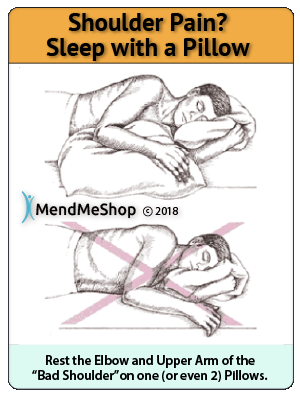
After Open Shoulder Surgery - Depending on how much damage was repaired, your shoulder will be immobilized in a brace or some form of cast for 2 to 3 weeks. Sutures are removed 10 - 14 days after surgery and you'll be allowed to bathe the shoulder after that point. It may take up to 3 weeks after the procedure for you to be able to use the shoulder lightly with little pain. Your doctor may recommend continued sling usage to reduce the chance of re-injury to your shoulder. Avoid all running and impact sports for at least 3 months after this surgery.
If you have undergone an arthroscopic shoulder surgery, you may have less blood loss and your doctor or surgeon will check before you leave to make sure your bleeding at the incisions has stopped. If you have undergone an open shoulder surgery, your doctor and/or surgeon will check your incisions periodically over the next few days of your hospital-stay to ensure that your body has stopped the bleeding on its own and also make sure that your incisions are starting to heal.
After your incisions, repaired and/or removed tissue has stopped bleeding; your shoulder will become tender, swollen, red and hot to the touch - these are all symptoms of inflammation. Step 2 of the healing process is inflammation reduction. At this point you will be home if you have had arthroscopic surgery, or you may still be in the hospital if you have had open surgery. In order to reduce pain, swelling and inflammation your doctor will prescribe an anti-inflammatory drug to be taken during the first week or 2 after your surgery. Your surgeon will also recommend a treatment for dealing with inflammation, like R.C.C.E. (Rest, Cold, Compression, Elevation).
We highly recommend use of a Cold Compress or Ice Pack at this stage for 15 to 20 minutes at a time, several times a day, to control your inflammation and reduce your pain.
Rest at this point is vital to your rehabilitation plan depending on the surgery you have undergone. If you have had arthroscopic surgery with minimal internal wounding from your surgeon, you may be encouraged to start movement early or as soon as possible. Limited movements of the shoulder/arm will be required in most cases after the surgery. If you have had an invasive open surgery, then you may be encouraged to rest longer at first before starting movement.
Your doctor or surgeon will advance you to the next Phase of rehabilitation when there is no evidence of inflammation or swelling in your shoulder. If you have had arthroscopic surgery, your doctor may expect that you are able to move your shoulder around pain free (with the aid of a sling if needed) before moving onto the next Phase of rehabilitation.
After the initial healing of your shoulder surgery (when Step 1 and 2 of the healing process is done), temporary tissue will start to grow around tissue that was damaged during your injury or the surgery. Step 3 is the Growth of Temporary Tissue.
This temporary tissue will also pull together the two sides of your tissue tear, and strengthen any area where you will have sutures. This tissue will lay the foundation for stronger, healthier tissue to come, but it will be soft and not as strong as regular healthy tissue. This is why you really need to be on "re-injury watch" and make the most of your home treatments for the rest of your rehabilitation. After all, it would be devastating for you if over-doing it at any point during the next few weeks or months of rehabilitation will send you right back into the operating room.

Once your new tissue has begun to grow you will be encouraged to gain back some of your range of motion (ROM) and increase the stability of your shoulder. Your doctor or surgeon may also introduce regular PT appointments. You may still be expected to wear a sling to reduce the amount of stress you are placing on your shoulder during movement (reducing your risk of re-injury).
You will start gradual movement of your shoulder in a free (non-forced) way with very low impact exercises. Your joint may be stiff at first, and you should expect simple and easy movement to be a bit more difficult for you to master and painful. Exercise of any kind is a method of increasing blood-flow in your shoulder to increase the amount of oxygen and nutrients that travel to your injured tissue.
You might start with gentle active arm/elbow extensions and flexion exercises with your hard shoulder brace/cast on at 0 - 14 days. In weeks 2 & 3, when you're out of a hard brace and in a sling, pain is the guiding factor with tolerance of weight-bearing or any exercises.
Strengthening exercises will slowly increase in difficulty (with more resistance) around 3 - 8 weeks after your surgery. Your shoulder and arm will be stiff and painful at first, and simple, easy movements may seem challenging in the beginning. Don't be discouraged!
We advise that you apply a TShellz Wrap treatment to help increase your blood flow before stretching (or exercise). Apply a TShellz Wrap treatment for approximately 15 to 20 minutes (finishing 15 minutes before exercise) to help increase elasticity and flexibility of your tendons, ligaments and muscles. The increased elasticity will help minimize tissue tears and scar tissue growth (increase ROM and decrease reinjury risk.

Controlling post-exercise swelling and inflammation is crucial during this Phase. Any sign of swelling or inflammation after exercise may be an indication of minor re-injury to your shoulder or to the surrounding tissues and muscles. Control your inflammation immediately after exercise with a 15 to 20 minute Cold Compress treatment and minimize chance of re-injury to your shoulder.
If you are not careful to treat your swelling or inflammation immediately after exercise you will experience a set-back in your recovery.
Your doctor, surgeon or physical therapist will advance you to the next Phase of rehabilitation when you show measured improvement of range of motion (ROM), strength, stability and flexibility of your shoulder. The level of improvement will depend on the severity of your injury and the type of surgery you have had. For example, if you have had a relatively simple arthroscopic repair of tissue, you may be expected to move the shoulder around before moving to Phase 3 of your rehabilitation.
If you have questions, call our office at 1-866-237-9608 (toll free continental US).
After temporary tissue has grown (Step 3 of the healing process), this temporary tissue will go through different stages of conversion into healthy, normal, flexible tissue. This is Step 4 of the healing process (Complete Tissue Re-Growth). Before converting into healthy tissue, temporary tissue will often become tough, dense, fibrous scar tissue. Scar tissue has an unorganized, inflexible tissue structure, which makes it brittle. Scar tissue will provide your injury with more long term fusing power, but will also stick to surrounding healthy tissue in your shoulder. The growth of this scar tissue is what stiffens your shoulder, restricting movement and flexibility.
This Phase of your rehabilitation will focus on an increase in activity level in order to regain full range of motion (ROM) and muscle strength in your shoulder. Continued exercise and activity will break up and soften scar tissue.
You will probably be able to stop using shoulder slings at this point as long as you focus on slow but steady shoulder movement.
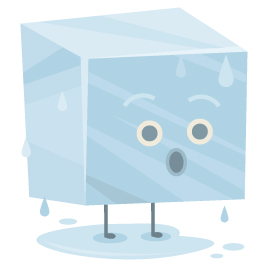
Continued use of a Cold Compress or Ice Pack after exercise and activity may still be recommended by your doctor. Like we mentioned before, controlling your pain and inflammation will go a long way to reduce your risk of re-injury. If you are noticing any recurring inflammation, you can continue cold treatments as recommended by your doctor.
Your doctor or physical therapist will advance you to the next Phase of rehabilitation when you have regained full ROM (range of motion) without pain in your shoulder. You may also have to pass clinical exams or tests of your muscle strength, balance, stability and flexibility in order to be cleared for Phase 4.
When your overall condition and range of motion has improved your doctor or physical therapist may clear you for a return to work or athletic activity. In many cases, they may recommend that you continue muscle strengthening and stretching instructed during your rehabilitation in order to maintain healthy ROM of your shoulder. Additional cardiovascular exercise will also be encouraged. If you are an athlete or have a job that requires extensive physical capability, your doctor or physical therapist will likely advise a very gradual return to previous activity.

Scar tissue may plague you for weeks, months and maybe even years after your surgery depending on your level of activity and the amount of conservative treatments you have undergone during your rehabilitation. Scar tissue will be a major problem as scar tissue can easily build up quickly and its hard to get rid of.
Even if you have been cleared to get back to activity, you still must be careful with the activity you take on. You need to keep in mind that your shoulder won't be back to 100% for some time (if at all) and so continued stretching with the exercises and stretches outlined in the ebooks and treatment with T•Shellz and cold will maintain good health of the shoulder and significantly reduce your risk of re-injury.
Scar tissue is something that will be in your injury before and after your surgery. The growth of scar tissue is what causes stiffening in the shoulder, restricting movement and flexibility. Scar Tissue is something that can't be avoided during surgery. Your surgeon will determine if the anticipated outcome from surgery will be successful even with the build-up of scar tissue that will happen after the procedure. Overall, the surgeon may be able to remove a lot of the initial buildup of scar tissue around the injury and in doing so, achieve a positive outcome from the surgery.
Unfortunately, scar tissue may plague you for weeks, months and maybe even years after your surgery depending on your level of activity and the amount of conservative treatments you have done during your rehabilitation.
When dealing with scar tissue...
Rehabilitation after your shoulder surgery is just the beginning of your recovery process. Even after you've had surgery to fix your shoulder and deal with the build-up of scar tissue, it is improbable that your soft tissue will heal 100%. From this point forward, it is more important than ever to be careful with your shoulder. The shoulder is probably weaker now, and your risk of re-injury is much higher.
It's simple to manage long-term healing of your shoulder with conservative treatment methods that can be used in the comfort of your own home. If you're looking for an all-natural form of pain management and long-term healing solution for long-lasting relief, seriously consider the benefits of incorporating the Shoulder TShellz Wrap into your treatment plan.
Cold Therapy can help you to decrease post-operative pain and swelling while also managing any pain from occasional inflammatory flare-ups (re-injury). Consistent treatment with a Cold Compress or Ice Pack will effectively reduce your inflammation, draw the pain out of your shoulder and gently numb the nerve endings in your tissue for rapid, long-lasting pain relief.
During your last few stages of rehabilitation, while you're undergoing PT and focusing on improvements to your range of motion, it's important to maintain healthy blood flow in your shoulder. Strong and healthy tissues need a solid local circulatory sytem, and this is exactly what our TShellz Wraps are made for.
Reduced blood flow slows down your recovery process. If your tissue remains in this condition, you'll always be at risk of re-injury that will severely set back your healing progress.
Use TShellz Wraps regularly to prevent re-injury and keep your muscles, tendons and ligaments elastic and flexible. Healthy blood flow is vital to the healing process after shoulder surgery. Your blood flow is what brings oxygen, nutrients and energy (things needed to heal) into your damaged tissue. Blood Flow promotes tissue re-growth, strengthening the delicate work your surgeon has done.
Regular treatments with Circulation Boost via the TShellz Wrap will help you increase blood flow for up to 4 hours with just one 20 minute application! There simply isn't a better product on the market to increase your body's natural healing process and provide long-term health benefits.
Tendons, ligaments, muscle and other soft tissue in the shoulder are all meant to be soft and flexible, ready to work and move extreme forces in everyday activities. When I say extreme force, I mean try to imagine the amount of force that your arm puts on your shoulder, even when you are just trying to lift your own arm, let alone something heavy.
Scar tissue grows in damaged tissue when it tries to heal; little tiny band-aids that overlap each other to bind tiny tissue tears together. With this added scar tissue, muscles & tendons & ligaments become rigid, less flexible and unable to handle the forces that it once could. If you're suffering with scar tissue now you may feel the effects with stiffness, tightness, weakness and tiredness in your shoulder.
Scar tissue can form fast to bring together the edges of a tear, but working fast doesn't mean that the job's done right. When scar tissue forms it doesn't come together as neatly as regular (healthy) tissue would. Scar tissue fibers will lay down over top of your tear in a cluttered, messy and jumbled up way.
On-going issues with scar tissue can result in soft tissue tears and increase chances of strain to nearby tendons or ligaments (as they are now handling higher forces due to overcompensation).
Scar tissue is one of the MAIN reasons why a chronic shoulder injury has not healed and your Range of Motion (ROM) is reduced from what it once was.
Scar tissue will form fast to deal with a soft tissue shoulder injury, and this scar tissue will attach to EVERYTHING in the area, including the surrounding healthy tissue as well. This can result in a fusing together of the soft tissue in your shoulder that shouldn't be fused together, and this will cause extreme pain when you move your shoulder - it is literally ripping scar tissue. This is why PT is often painful - the therapist stretches the joint, forcing the scar tissue bonds to break so you can regain your range of motion.
Scar tissue is a major problem especially when it comes to a shoulder injury - causing your injury to become chronic, and taking months or even YEARS to completely heal!
You can quickly minimize scar tissue growth and reduce risk of re-injury to your shoulder muscles/tendons/ligaments by increasing blood flow to that area and increasing the elasticity of soft tissue in the area. Treating yourself with the Shoulder TShellz Wrap is the easiest and most effective way to accelerate your recovery, increase soft tissue elasticity and deal with stubborn scar tissue.
When applied before activity or work, the TShellz Wrap will also relax and lengthen your soft tissue to help improve your range of motion and prevent atrophy (tissue wasting & shortening) of your injured shoulder.
Overall, continued treatment with a TShellz Wrap will maintain good health in your soft tissue and significantly reduce your risk of re-injury.
If you want to heal quickly, you need to keep your blood moving and that's where LEC Response® comes in.
What is LEC Response®? It's a substantial increase in the flow of blood to soft tissue in the shoulder without the need to exercise your already damaged tissue.
Have you seen what happens when you add water to a flower wilted from drought? In essence, your injured shoulder is much like a "wilted" flower; your body wants to heal its injury, but needs lots of nutrients to do it. Blood supports and facilitates new life by delivering healing nutrients and oxygen that are vital to your tissue. In addition, the blood carries away toxins and waste cleaning the area and healing it faster. Without a good supply of blood, your injury simply won't heal properly.
With LEC Response® your injured shoulder is constantly being fed with healing, nutritious, oxygen and energy filled blood. This is exactly what your body needs to heal.
In order to get maximum blood flow to your shoulder, you need to help your body stimulate blood flow. LEC Response® is the fast, easy and pain-free way to increase localized blood flow to help you body maximize its ability to heal tissue. It's the key to dealing tears, tendonitis and strains in the shoulder properly. To achieve LEC Response® for the shoulder, you need a Shoulder TShellz Wrap®.
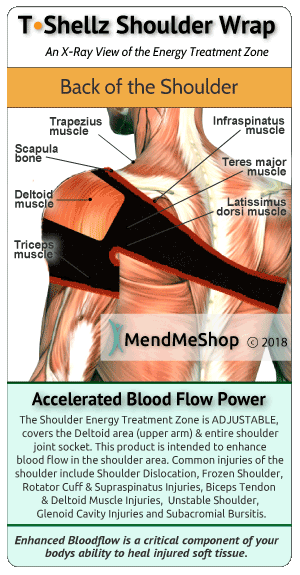
TShellz Wrap® = The Perfect LEC Response® Delivery Tool
If your doctor thinks you might be able to avoid surgery by using conservative treatments, you can join our many customers who have had great success treating themselves with the powerful treatment products we offer through AidMyFrozenShoulder.
Frozen shoulder, shoulder impingements and soft tissue shoulder injuries are not uncommon - it can happen to anyone. Right now, there are thousands of doctors and physical therapists dealing with patients that require a solution to heal their injury as fast as possible. Maybe they are just patients that are unwilling to just take pain pills, lay in bed and wait or perhaps they are patients with extensive access to medical care with a great insurance plan. Even fortunate patients such as this have greatly benefited from boosting their PT and medical treatments with home treatments using the products we have recommended.
Regardless of who you are or your reasons, if you want to be proactive about properly addressing your shoulder condition and minimizing the negative impact it will have on your lifestyle, consider incorporating the Shoulder TShellz Wrap® into your daily home treatment regimen. We have many happy customers that have recovery experiences more positive than even they had hoped for, and significantly reduced their pain during treatment and through the healing process.
Click HERE to Go To Our Online Store We take all major credit cards and Paypal. If you are on your mobile phone, Click to Call Our Office (toll free continental NA).
Living with pain is never easy as it affects your entire lifestyle. Living with pain during or after an intensive surgery and lengthy rehabilitation period can be even harder! What is more important than taking your best shot at trying to heal your shoulder before signing up for surgery?
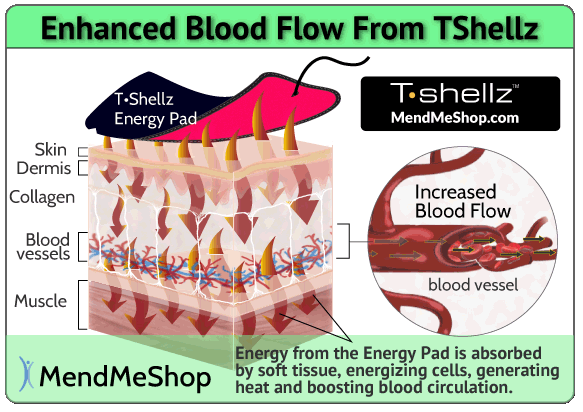
Doctors and Surgeons are always improving the technologies used in surgery, and results from surgery now are much more positive than they were in the past. However, all surgeries introduce scar tissue, and recovery from shoulder surgery is often disappointing. If you do wind up getting surgery, know that rehabilitation at-home while attending regular PT or doctor appointments is vital for your overall recovery. It is especially vital to the shoulder and knee areas, as they consistently handle extreme forces (body weight). Consistent exercise and conservative treatment on a daily basis during your rehabilitation while working with your doctor, surgeon or physical therapist is key - and this is why you should seriously consider maximizing your recovery by using the Shoulder TShellz Wrap® at home once you are approved for PT.
AidMyFrozenShoulder.com stands out in this regard as our goal is to help you keep your shoulder healthy for the long-term in a cost effective manner. This might mean healing your shoulder without needing surgery. If you couldn't avoid surgery, then our tools can also help you recover from surgery more quickly and completely..
We strongly believe that we can help you, and we have thousands of happy clients to back this claim. You are welcome to try our products for a 60 day period.. If you are committed to following the treatments outlined in the product instructions we are very confident that our TShellz Wraps will aid you immensely. If you do not receive the benefits that countless of our other customers have experienced from our products, call us, mail the product back to us and we will provide you with a full product refund.
Our online shop accepts Visa & Mastercard as well as a Paypal Payment option.
We also encourage your to Call Our Office at 1-866-237-9608 (toll free continental NA) where we can answer any questions you have and/or take your order via phone.
Our customer service lines are open 5 days a week helping people understand their injuries and how to treat them. Simply call toll free 1-866-237-9608 to talk or place an order with one of our knowledgeable Product Advisers. They have the ability to answer questions and even put together a treatment plan for you.
North America Toll Free 1-866-237-9608
Outside North America +1-705-532-1671
Living with pain is never easy and we encourage you to call us with any questions regarding how our products might relate to your frozen shoulder condition. We will do our best to help.
Product Advisors are available 9:00 am to 5:00 pm Eastern Standard Time Monday to Friday.
Learn more about Shoulder Surgery and Post-Surgery Recovery
Learn more about about how the Circulatory Boost TShellz Wrap® helps with the healing process.
Learn more about which is better for your frozen shoulder injury - ice or heat
During your recovery, you will probably have to modify and/or eliminate any activities that cause pain or discomfort at the location of your soft tissue injury until the pain and inflammation settle. The more diligent you are with your treatment and rehabilitation, the faster you will see successful results!
Please be aware that this information is neither intended nor implied to be a substitute for professional medical advice. CALL YOUR HEALTHCARE PROVIDER IMMEDIATELY IF YOU THINK YOU MAY HAVE A MEDICAL EMERGENCY. Always seek the advice of your physician or other qualified health provider before using any of our outstanding products to make sure they are right for you and your condition or if you have any questions regarding a medical condition. Always see your doctor for a proper diagnosis as there are often many injuries and conditions (some very serious) that could be the cause of your pain.
© 2025 In.Genu Design Group, Inc. Contact Us